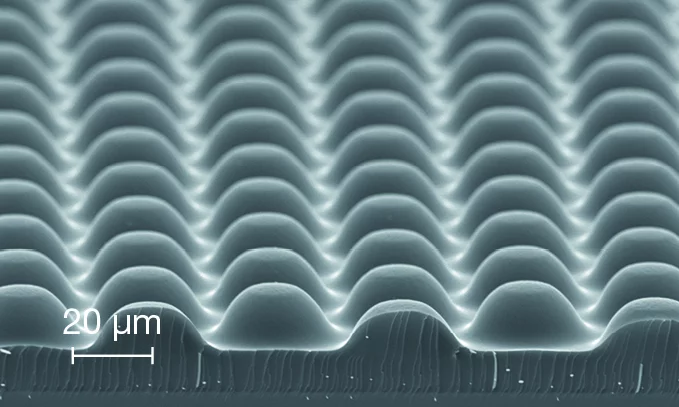Start-, middle-, and end-section of two 2 mm long gratings. With 200.000 (upper) and 200.020 nm (lower grating) they almost look the same. The difference of 20 pm becomes visible in the number of periods (10000 in the upper, 9999 in the lower grating).










